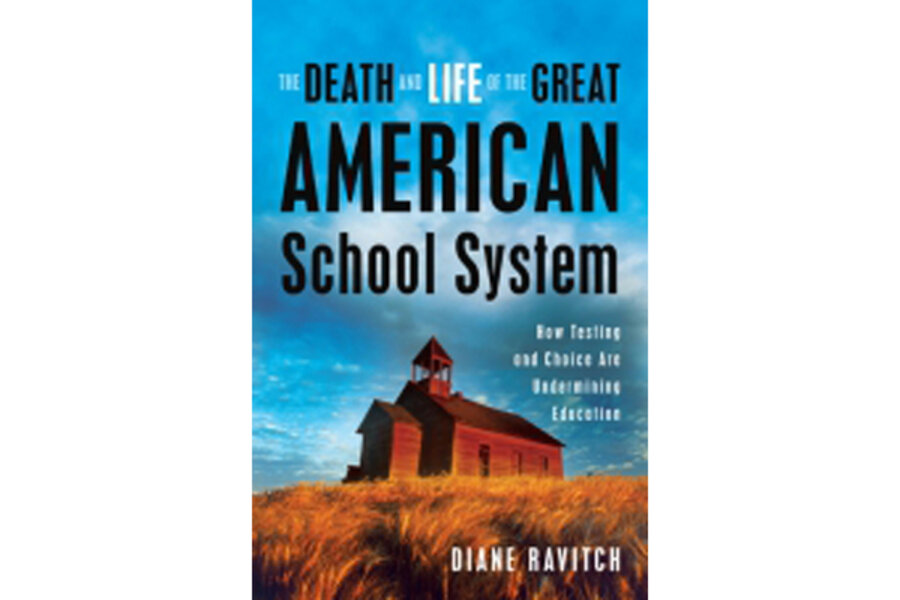The Death and Life of the Great American School System
Loading...
Teaching school is as humbling as parenting and equally dependent on careful human adjustments. Politicians and policymakers, on the other hand, at work far from the actual difficulties, are able to take reckless action and ignore the squawks of the affected communities. Education problems are so very specific that they are rarely remedied by on-high administrative shufflings and sudden and short-term financial redistributions. That’s why so many teachers and students directly involved in teaching or learning in public schools, for instance, fail to believe in the long-term educational benefits of the high-stakes testing mandated by America’s No Child Left Behind education law.
Diane Ravitch, the renowned education historian who once served in the first President Bush’s Education secretary’s office, remembers back in the 1980s when she “began ‘seeing like a state,’ looking at schools and teachers and students from an altitude of 20,000 feet and seeing them as objects to be moved around by big ideas and great plans,” she writes in her new book The Death and Life of the Great American School System. She recalls how more recently, “there were periodic outbursts by parents and activists against excessive testing and even some organized protests against mandatory state tests. I was not sympathetic to the anti-testing movement. I didn’t see why anyone would object to an annual test of reading and mathematics.”
Ravitch’s book should be called “Confessions of an Ex-Policymaker,” rather than to try to evoke Jane Jacobs’s 1961 classic, “The Death and Life of Great American Cities.” Jacobs was a wonderful nobody whose clear vision of urban mismanagement showed how governmental agencies were blindly destroying neighborhoods and cultures. Ravitch, on the other hand, has long been a somebody who, as she admits, should have known better than to have “jumped aboard a bandwagon, one festooned with banners celebrating the power of accountability, incentives, and markets.” We have to appreciate, though, how clearly and pointedly Ravitch writes, as most of the chapters unfold like first-rate public lectures or lengthy but rather good Op-Ed pieces.
Ravitch only came around as a fully-committed critic of the testing craze in 2006 when members of a conservative panel presented overwhelming evidence that “NCLB was a failure.” The evidence suggested that No Child Left Behind had, just as many parents and teachers claimed, been wrenching school systems into a high-pressured, money-driven strategy of teaching to the tests. In addition, many parents said that they preferred sending their children to neighborhood schools and were not opting for “school choice”; they simply and sensibly wanted their local schools to be improved.
Ravitch discovered that even when the test scores were not gamed by states (by lowering the passing scores each year), focusing all accountability on math and reading scores was less productive than allowing schools to continue their muddled but broad-based curriculum. She also found that while some charter schools are indeed very good, they only become so by hook or by crook, because unusually dedicated teachers, parents, and students have thrown themselves into making a particularly good school; otherwise, most charters do no better than the public schools they too often gut and then displace.
Because education depends on the communication of not only skills but attitudes, immediate and steady neighborhood participation in public schools seems to work better than anything else: “The fundamentals of good education are to be found in the classroom, the home, the community, and the culture, but reformers in our time continue to look for shortcuts and quick answers. Untethered to any genuine philosophy of education, our current reforms will disappoint us, as others have in the past.”
It seems to me that politicians blaming teachers for our national failures in public education is like blaming bridges for falling down. Who made that bridge? Who maintains it? Who ensures its safety?: “Something is fundamentally wrong with an accountability system that disregards the many factors that influence students’ performance on an annual test – including the students’ own efforts – except for what teachers do in the classroom for forty-five minutes or an hour a day.”
Here and there Ravitch disarmingly evokes memories of her own childhood education in Houston in the 1940s and ’50s and a favorite teacher, Mrs. Ruby Ratcliff, whose greatness – “her ability to inspire students and to change their lives” – in today’s test-driven schools “would go unrewarded because it is not in demand and cannot be measured.”
Ravitch’s hopeful vision is of a national curriculum – she’s had enough of fly-by-night methods and unchallenging requirements. She’s impatient with education that is not personally transformative. She believes there is experience and knowledge of art, literature, history, science, and math that every public school graduate should have. She is necessarily vague, though, about how to achieve her goals, as school privatizers and billionaire philanthropists have not yet handed her the keys to the vault that opens the door to influence.
Bob Blaisdell teaches in Brooklyn at Kingsborough Community College. His children attend school in New York City.





